The Current State of Native Theatre
This week on HowlRound, we are exploring Native voices on the American stage. I have deemed this week: "Instead of Redface"—as our voices collectively question why redface is more prevalent on the American stage than our own authentic Native voices. As the producing artistic director of the only Equity theatre dedicated exclusively to producing plays by Native playwrights, and as a brilliant and talented Native playwright and director in his own right, Randy Reinholz's voice this week offers an incredible resource to those who have no experience in making room for authentic Native voices on the American stage.—Mary Kathryn Nagle
I have to get this written. Why? I’m polishing the production draft of Off The Rails, Native Voices’ twenty-seventh production. Now in rehearsal, we are immersed in the world of the play, where it’s 1886 and the Union Pacific Railroad, an Indian boarding school, and Madame Overdone's Stewed Prunes Saloon collide. It’s a bawdy and irreverent adaptation of Shakespeare's Measure for Measure set in Buffalo Bill's Wild West—and my way of turning history on its head.
The idea and creation of the American Indian boarding school came at a moment in time when according to the US Census, there were only 218,000 Indians left alive in America. The total annihilation of Native people nearly happened (from an estimated fifteen million to less than a quarter of a million in 1880). On the surface the US government was seen as benevolent, “providing” reservations, treaties, and schools for what many still called savages. In reality, the Indian boarding school was the answer to what many called the “Indian Problem.” This was the pinnacle—the turning point for Native people. One way or another, the US was determined if not to wipe out Native people, then to wipe out traditional life ways, language, and culture.
When Native Voices began in 1994, a handful of published plays by Native Americans were available to theatre artists, producers, scholars, and patrons. Now hundreds of Native plays exist. The growth in the field has led to a deep talent pool of Native actors and experienced Native theatre artists across the United States. Yet there’s still more to do. More grassroots support is needed, more collaboration with tribal communities, arts organizations, and universities.
As an enrolled member of the Choctaw Nation of Oklahoma, I have family members who attended Indian boarding schools. This is a history that continues to haunt Native people and communities to this day. And it’s a history audiences are surprised to hear about—let alone see on stage. Off the Rails looks at the real and lasting wounds inflicted by the Indian boarding schools, through the lens of a Shakespearean comedy. The structure and historical distance allow me to reveal hard truths. They also allow me to populate the stage with lead characters who are Native, and living through the story.
Our director for this production, associate artistic director of Shakespeare Center Los Angeles Chris Anthony says,
When power is allowed to run amok, the oppressed will do whatever they must to survive it. In the photos from the boarding schools, I see an attempt at cultural genocide. People stripped of their traditional dress. People stripped of their language. Their drums are taken away, literally and metaphorically. But we know the powers of the day did not ultimately win. Native Americans survived and that's why we tell the story. That's why Native Voices exists.
Native Voices at the Autry in Los Angeles is the country’s only Equity theatre company dedicated exclusively to developing and producing new works by Native American playwrights. Founded in 1994, Native Voices became the resident theatre company at the Autry National Center in 1999. Developing, producing, and touring new works by Native playwrights from across North America, we have mounted twenty-seven productions, including seventeen world premieres. We’ve produced eleven playwright retreats, nineteen national and international tours, four short play festivals, fifteen radio plays, and twenty new play festivals, holding over 150 workshops and 190 public staged readings of new plays.
In 2008, La Jolla Playhouse became our San Diego host for our New Play Festival. Scripts developed by Native Voices have gone on to workshops or productions at The Public Theater, the Mark Taper Forum, New York Theatre Workshop, the Kennedy Center, the Minneapolis Playwrights' Center, Native Earth Performing Arts, Montana Rep, Perseverance Theatre, and numerous community, university, and museum venues. We’ve toured nationally and internationally, including Arigon Starr’s The Red Road at the ASSITEJ World Congress in Adelaide, Australia and Diane Glancy’s Salvage, which premiered in Los Angeles, and was remounted with the original director and cast at Riverside Studios in London. Carolyn Dunn’s The Frybread Queen went to Montana Rep, and this month we’re remounting Vicky Ramirez’ Stand-Off At HWY# 37 with the University of South Dakota, featuring Native Voices actors, who are members of Equity, working with a student cast from the university.
When Native Voices began in 1994, a handful of published plays by Native Americans were available to theatre artists, producers, scholars, and patrons. Now hundreds of Native plays exist. The growth in the field has led to a deep talent pool of Native actors and experienced Native theatre artists across the United States. Yet there’s still more to do. More grassroots support is needed, more collaboration with tribal communities, arts organizations, and universities.
This year Native Voices developed the Native Voices Artists Ensemble, an artist-centered collaborative studio developing and producing new work. The ensemble explores issues as they relate to conversations in Indian Country today. We plan to tour work to Native communities, schools, and universities. The ensemble also expands workshops and career building opportunities for Native theatre artists pursuing careers in acting, writing, directing, and producing.
The Native Voices Artists Ensemble inspires me. As producing artistic director of Native Voices at the Autry, I have the privilege of working regularly with gifted Native theatre artists and the vibrant LA theatre community. My partner in life, and in this work, is the amazing producing executive director of Native Voices, Jean Bruce Scott. As artists we are driven to make work that is compelling and difficult, presenting truths about life that are paradoxically beautiful, complex, and sometimes brutal.
Professionals who claim not to be able to find Indians in theatre or in their cities are displaying grand ignorance, not proclaiming “the state of affairs” within the American Theatre. Today there are more experienced, informed Native American theatre artists working in the US and Canada than ever before. They are writing and acting and informing scripts written by others. We are creative, passionate, and dedicated to our craft and stories, yet agile enough to tell any story. Google "Native American theatre" and you’ll get more than 32,000 results. People who portray Indians on stage as stereotypes of savage American Indians should first consult with professionals, scholars, and culture bearers who work in the field for advice and guidance. We are in plain sight and just a click away. It is a great time to make a play by and with Native Americans. All of us could do more to make art that tells the whole story. The time is right. What can you do?
***
Photos:
1. The Bird House by Diane Glancy. Carla Rae Holland (as Majel), Robert Owens-Greygrass (as Rope), and Randy Reinholz (as the Reverend Jonathan Logan aka Hawk).
2. October 2010 workshop of The Catch by Diane Glancy. Native Voices at the Autry on the Historic Southwest Museum Mt. Washington Campus. Robert Owens-Greygrass looking at one of the Fort Marion Ledgers.
3. The Bird House by Diane Glancy.Watching the parade of trucks to the newest drilling site. Carla Rae Holland (as Majel) and Ellen Dostal (as Clovis).
4. October 2010 workshop of The Catch by Diane Glancy. Native Voices at the Autry on the Historic Southwest Museum Mt. Washington Campus. Kneeling: Randy Reinholz. First Row Standing: Noah Watts, Robert Owens-Greygrass, Kim Walters, Diane Glancy, Delanna Studi, Carlenne LaCosta, Riana La Costa, Caroline Chang. Back Row: Vincent Scott, Adeye Sahran, Christina Wright, Kalani Queypo.


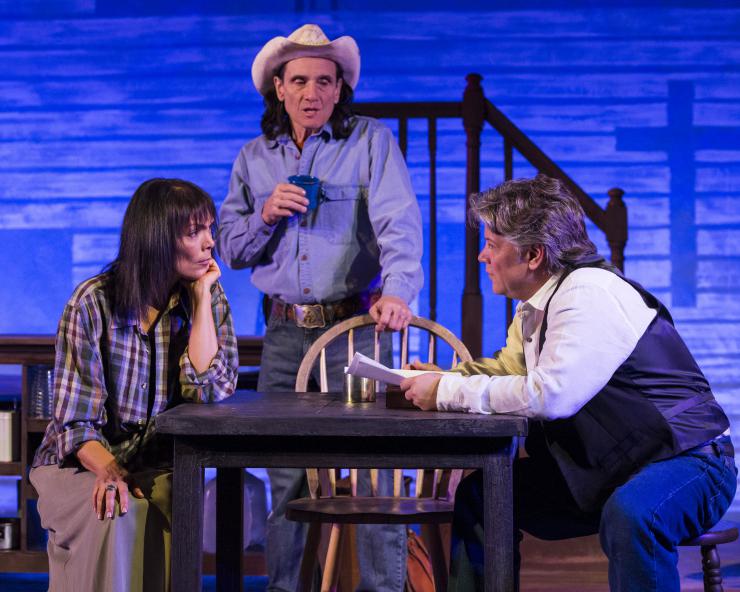
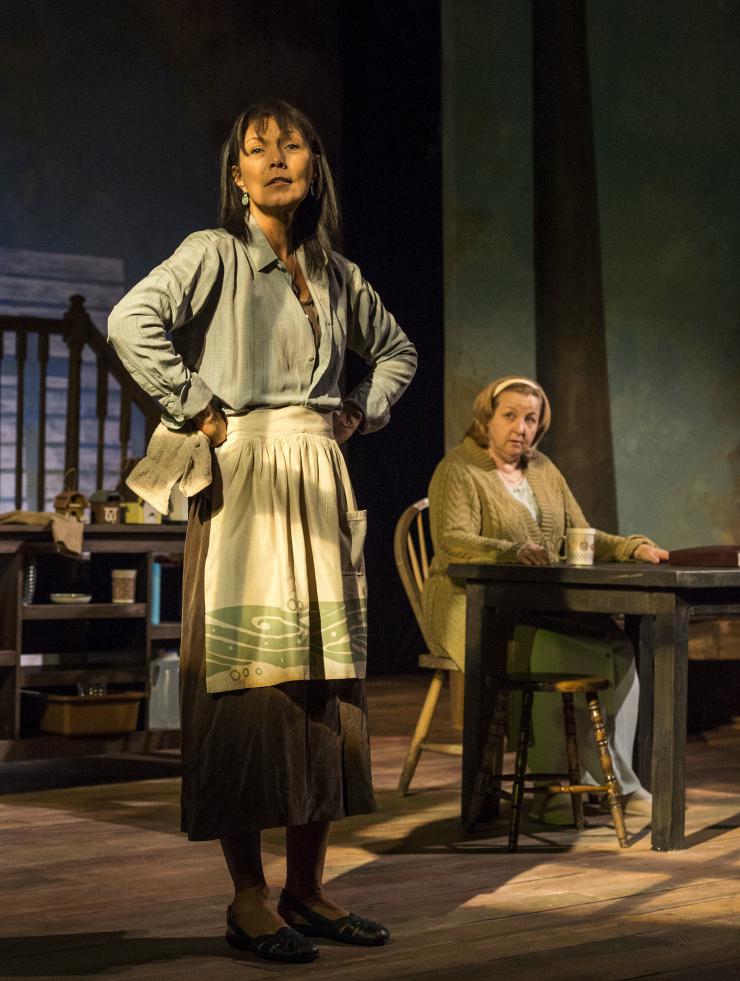

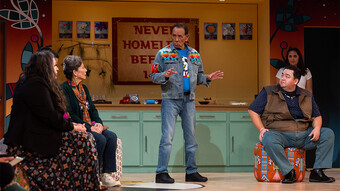

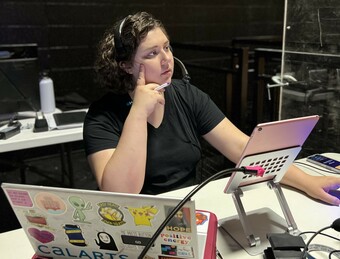

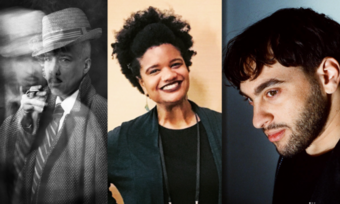



Comments
The article is just the start of the conversation—we want to know what you think about this subject, too! HowlRound is a space for knowledge-sharing, and we welcome spirited, thoughtful, and on-topic dialogue. Find our full comments policy here
"People who portray Indians on stage as stereotypes of savage American Indians should first consult with professionals, scholars, and culture bearers who work in the field for advice and guidance."
I'm actually attempting to portray an Indian character on stage as a mostly competent - if imperfect - intelligent, well-educated, dedicated public servant, with a dry sense of humor. I'd love to consult with a professional, scholar, and/or culture bearer to get feedback on whether I got my portrayal right, but I have no idea where to begin. Would you be so kind as to point me to a resource?